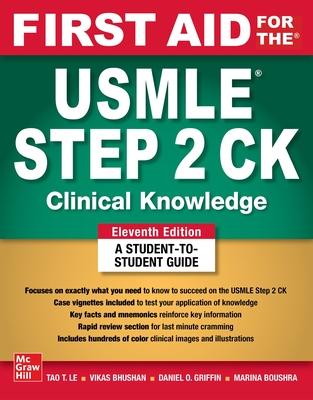Kindle Notes & Highlights
LVEF >40% is heart failure with reduced ejection fraction (HFrEF). Also known as systolic HF
LVEF 41% to 49% is heart failure with moderately reduced ejection fraction (HFmrEF).
LVEF ≥50% is heart failure with preserved ejection fraction (HFpEF).
Loop diuretics lose calcium; thiazides take it in. Both cause hypokalemia and hyperuricemia.
Dapagliflozin and Empagliflozin reduce mortality in HFpEF.
An S3 gallop signifies rapid ventricular filling in the setting of fluid overload
An S4 gallop signifies a stiff, noncompliant ventricle and ↑ “atrial kick” and may be associated with hypertrophic cardiomyopathy.
Loeffler eosinophilic endocarditis,
Beck triad (hypotension, distant or muffled S1 and S2 heart sounds, and JVD), a narrow pulse pressure, and pulsus paradoxus.
left-sided murmurs decrease with inhalation.
Size of AAA determines treatment: <5 cm → monitoring >5 cm → surgical correction
Calf claudication = femoral disease Buttock claudication = iliac disease Buttock claudication + impotence = Leriche syndrome (aortoiliac occlusive disease)
Cilostazol is effective medication in intermittent claudication, although it is contraindicated in those with CHF. Surgery (arterial bypass),
Bullous impetigo is almost always caused by exfoliative toxin-producing strains of S aureus and can evolve into SSSS.
SSSS: Systemic dissemination of exfoliative toxin destroys desmoglein-1 in the stratum granulosum of the skin.
Salmonella typhi: Small pink papules on the trunk (“rose spots”) in groups of 10 to 20 plus fever and GI involvement. Treat with fluoroquinolones and third-generation cephalosporins. Consider cholecystectomy for chronic carrier state.
Treat tuberculoid leprosy with dapsone and rifampin. Add clofazimine for lepromatous or multibacillary leprosy.
Oral candidiasis: Oral fluconazole tablets; nystatin swish and swallow, clotrimazole troches. Esophageal candidiasis: Systemic fluconazole, echinocandins, amphotericin B. Superficial (skin) candidiasis: Topical antifungals; keep skin clean and dry. Vulvovaginal candidiasis: Topical antifungal, single dose of oral fluconazole. Diaper rash: Topical nystatin.
Increased serum alkaline phosphatase with normal gamma-glutamyl transpeptidase (GGT) points to bone etiology, not liver etiology, as the cause of elevation.
Bone pain and hearing loss → think Paget disease.
Etiologies of hypoparathyroidism include iatrogenic (postsurgical), autoimmune, congenital (DiGeorge), and infiltrative (hemochromatosis, Wilson) diseases.
Red flag symptoms of dyspepsia: progressive dysphagia, iron-deficiency anemia, odynophagia, palpable mass or lymphadenopathy, persistent vomiting, or a family history of GI malignancy.
Bismuth quadruple therapy (PPI, bismuth subcitrate, tetracycline, and metronidazole) can treat H pylori infection. Other quadruple regimens include PPI, clarithromycin, amoxicillin, and metronidazole.
Anterior duodenal ulcers have a tendency to perforate, whereas posterior duodenal ulcers have a tendency to cause bleeding from erosion through the gastroduodenal artery.
Whipple disease (also presents with arthritis, lymphadenopathy, cardiac issues, periodic acid–Schiff [PAS]–positive granules in lamina propria on biopsy), tropical sprue (chronic diarrhea and nutritional malabsorption [vitamin B12 and vitamin B9] and living >1 month in an endemic area)
four pathologies contribute to acute abdomen and present with characteristic symptoms. Considering these mechanisms along with location and associated history/physical examination findings may help delineate the diagnosis. The four pathologies are perforation/rupture, obstruction, inflammation, and ischemia.
Treatment IV antibiotics with anaerobic and gram ⊖ coverage (eg, cefoxitin or cefazolin plus metronidazole). The patient should be NPO and receive IV hydration, analgesia, and antiemetics.
Diverticulosis: Presence of many diverticula—most common cause of acute lower GI bleeding in patients >40 years of age.
Gardner Syndrome Familial adenomatous polyposis (FAP) + osteomas + fibromatosis
Turcot Syndrome FAP + brain tumors (eg, medulloblastoma)
Juvenile Polyposis Syndrome (JPS) Autosomal dominant condition causing numerous hamartomatous polyps in the GI tract in young patients.
Autoimmune hepatitis: ⊕ Anti–nuclear and anti–smooth muscle antibodies (type 1) and anti–liver-kidney microsomal-1 antibodies and anti–liver cytosol antibodies
Wilson disease: ↓ ceruloplasmin, ↑ urine copper, Kayser-Fleischer rings.
The major clinical feature of type 2 hepatorenal syndrome is ascites resistant to diuretics.
PSC also associated with p-ANCA antibodies
Hemophilia A and hemophilia B are X-linked recessive genetic disorders. Hemophilia C is most common in people with Ashkenazi Jewish heritage, and it is often autosomal recessive.
Heyde syndrome is a multisystem disorder characterized by the triad of aortic stenosis (AS), GI bleeding, and acquired von Willebrand syndrome, which results from the increased circulatory shear forces and subsequent cleavage and loss of vWF.
VWD types 1 and 2 are generally inherited in an autosomal dominant pattern. VWD type 3 is inherited in an autosomal recessive pattern.
ANTIPHOSPHOLIPID SYNDROME Antiphospholipid syndrome (APS) is often associated with systemic lupus erythematosus (SLE) (20%–30%) and rheumatoid arthritis (RA). The main APS antibodies are the lupus anticoagulant, anti-beta-2-glycoprotein, and anticardiolipin. APS predisposes to both arterial and venous thrombi formation and spontaneous abortion (particularly associated with anticardiolipin antibodies). Laboratory testing shows a paradoxically prolonged PTT (only thrombophilia with an abnormality in the PTT).
Acute DIC is observed with a recent history of trauma or sepsis or in patients with a history of ABO-incompatible blood transfusions. It presents with bleeding; low platelet count and plasma fibrinogen; and a prolonged PT, PTT, and D-dimer.
The physician should suspect TTP if three of five of the following symptoms are present (LMNOP): 1. Low platelet count (thrombocytopenia) 2. Microangiopathic hemolytic anemia with schistocytes (severe, often with jaundice) 3. Neurologic changes (delirium, seizure, stroke, ↓ consciousness, ↓ vision) 4. “Obsolete” (impaired) renal function (acute kidney injury [AKI]) 5. Pyrexia (fever)
Platelet transfusion is contraindicated in HUS, as additional platelets are consumed by the disease process, potentially worsening the patient’s condition.
important to rule out pseudothrombocytopenia due to platelet clumping by ethylenediaminetetraacetic acid (EDTA) in test tubes.


